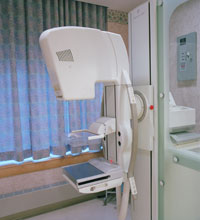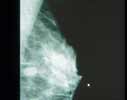AAPM Neck Tie
AAPM neck ties come in three different lengths (58”, 62” and 66”). Our ties are made of custom milled recycled poly twill fabric with a silk-like feel, superior print quality and product durability and minimal sheen. Each tie is cut and sewn to meet our exacting specifications. AAPM Members can proudly wear these smart-looking ties while also making a subtle statement of their affiliation with us. Fabric and internal components do not contain any animal products.
AAPM Bow Tie
AAPM bow ties incorporate a subtle rendition of AAPM’s logo in a distinctive pattern. Each bow tie is made of custom milled recycled poly twill fabric with a silk-like feel, superior print quality and product durability and minimal sheen. Your tie is cut and sewn to our exact specifications. Choose either the standard (14”-18” neck) or Extra-long (18”+). From the classically elegant to the dapper dresser, this bow tie communicates an understated statement of your affiliation with us. Fabric and internal components do not contain any animal products.
AAPM Pocket Square
Looking for a complement to any suit or sports jacket? The AAPM pocket square provides a dash of sophistication while quietly communicating your affiliation with AAPM with the subtle use of our distinctive logo on the facing side and a reverse of white. Each 12” x 12” pocket square has a finished pearled edge and is made of custom milled recycled poly twill fabric with a silk-like feel, superior print quality and product durability and minimal sheen. Fabric and internal components do not contain any animal products.
AAPM Infinity Scarf
The AAPM infinity scarf is made from very fine, light-weight, silk-like poly chiffon. A distinctive pattern employs the signature AAPM logo against a white background. Discover the many ways to wear an infinity scarf and transform any outfit into a fashion statement piece. All scarf fabrics and internal components do not contain any animal products.
AAPM Rectangular Scarf
Our 24” x 72” scarf is made from very fine, light-weight silk-like poly chiffon. A distinctive pattern employs the signature AAPM logo against a white background. AAPM Members will sport a sophisticated yet jaunty classic that easily transitions from business attire to casual wear. All scarf fabrics and internal components do not contain any animal products.
AAPM Square Scarf
Our 28” x 28” scarf is made from very fine, light-weight silk-like poly chiffon. A distinctive pattern employs the signature AAPM logo against a white background. AAPM Members will sport a sophisticated yet jaunty classic that easily transitions from business attire to casual wear. All scarf fabrics and internal components do not contain any animal products.
Corey E. Zankowski, PhD
Email: corey.zankowski@varian.com
Company: Varian

Corey Zankowski is currently Chief Technology Innovation Officer and SVP of Oncology Software Solutions - Varian Medical Systems, responsible agile innovation of technology and business models within a large corporation. He has held various product development positions within Varian and oversaw innovations such as Eclipse, RapidArc, RapidPlan, TrueBeam, HyperArc and Halcyon that help improve the effectiveness and efficiency of radiotherapy treatments worldwide. His current focus is the application of machine learning and artificial intelligence to different problems in oncology.
Corey joined Varian Medical Systems in 1999 as a Product Manager for the Treatment Planning Software business after working as a medical physicist in Vancouver for the British Columbia Cancer Agency. He completed his doctorate in Physics from the prestigious McGill University in Montreal, Canada.
Rick J. LeBlanc, MBA
Email: rleblanc@nelcoworldwide.com
Company: NELCO

Rick LeBlanc is President and Chief Executive Officer of NELCO Worldwide, the global leader in medical and industrial radiation shielding solutions for a safer planet. His global vision and inspirational leadership successfully expanded the company’s product and service offerings, markets, employees, and operational systems and procedures to 47 countries across 6 continents.
Rick has built his career protecting the lives of cancer patients and the doctors who treat them. With completed projects in all 50 of the best hospitals for cancer, plus over 3,500 treatment rooms and 4,800 GUARDIAN shielded door systems installed around the globe, NELCO provides safety and peace of mind to over 117,000 patients and countless professionals every day. Today, Rick and his teams are engaged in over half of all proton therapy projects worldwide with an 80% share in the radiation therapy market.
As a board member of AAPM, Rick’s mission – which coincides with his company motto: Safety for Life – is to provide innovative solutions that allow cancer centers to treat patients in as safe an environment as possible.
Outside of his responsibilities at NELCO, Rick is a multi-level entrepreneur invested in a broad portfolio of companies spanning healthcare, food and hospitality, manufacturing, and real estate development. He also serves on the boards of several prestigious business and academic organizations.
Mark Devlin
Email: mark@cirsinc.com
Company: Computerized Imaging Reference Systems

Mark Devlin is President and Chief Operating Officer of CIRS Inc., Norfolk Virginia. CIRS is a recognized leader in the manufacturer of phantoms and simulators for calibration, quality control, training and research in medical imaging and radiation therapy. He is an investor and member of the board of directors for Castleray, a diversified holding company with businesses and real estate throughout the United States. He serves as an advisor for Tax Token, a start up company using blockchain technology and artificial intelligence to modernize personal accounting. He received his BS and MBA from James Madison University. Mark resides in Virginia Beach with his wife Kerstin, a public school teacher and former adjunct professor at Old Dominion University and his two sons Shane and Liam.
Eric DeWerd
Email: edewerd@standardimaging.com
Company: Standard Imaging

Eric DeWerd is the President for Standard Imaging, responsible for the day to day operations and direction of the company. He has held various sales, marketing, and business development positions within Standard Imaging ensuring the precision QA solutions delivered help improve patient safety and success of radiation therapy treatments. Eric joined Standard Imaging in 1994 as a Sales Representative after completing his International Business degree at the University of Wisconsin Madison. He completed his Executive MBA from the University of Wisconsin Madison in 2017.
As Standard Imaging's president, Eric's focus has been to create collaborative, enthusiastic leadership that is driven by a passion for fighting cancer with precision QA instruments. He has been successful in delivering cross department strategy direction while executing on market share growth and focusing on financial viability. His ability to find value and success where people and business goals creatively intersect combines a natural curiosity in medical physics with business acumen to drive growth.
Carlos Castilleja
Email: Carlos.Castilleja@elekta.com
Company: Elekta

Carlos Castilleja is the Vice President of Global Order Fulfillment and Senior Vice President of Order Fulfillment for North and Central America at Elekta, a global leader in precision radiation medicine. For the past 12 years at Elekta, Carlos has been able to wake up every day knowing that he and his colleagues are revolutionizing cancer care by helping clinicians focus where it matters and empowering them to protect the moments that matter for their patients.
In his roles, Carlos and his team of dedicated employees support and fulfill customers’ orders and aim to deliver the most effective and efficient management, delivery, installation, and training for Elekta solutions. In addition, Carlos oversees the Technical Installations (Informatics, Treatment Delivery, Interfaces) and Clinical Operations Teams globally.
As a board member of AAPM, Carlos fully supports the vision and mission of AAPM and is optimistic of the collaboration efforts to innovate and push boundaries in medicine through the synergy of science, education, and the professional practice of medical physics.
Curtis R. Harkless, PhD
Email: charkless@radcal.com
Company: Radcal

Dr. Harkless obtained a Bachelor of Science degree from Case Western Reserve University in Applied Physics before obtaining a Ph.D. in Experimental Physics from the University of Florida in 1990. His dissertation studied structural phase transitions in novel materials such as binary polymers as observed using innovative time-resolved x-ray scattering techniques.
Dr. Harkless has over 30 years of experience in executive management, sensor development, algorithm engineering, noise reduction, weak signal detection, and interpretation of physical phenomena. During that time Dr. Harkless had the privilege of developing novel signal detection and parameter estimation techniques for mission critical applications in both the US Defense and commercial domains.
As a Department Manager for Areté Associates, Dr. Harkless led the company’s efforts to adapt physics-based defense technology for use in commercial industries. One such application was adaptation of simulation software developed in support of the Navy for use in the entertainment industry. The resulting special effects software generated high fidelity ocean, sky, and cloud animations used in several major motion pictures such as Titanic and Waterworld.
Fingerprint identification was another adaptation of defense technology led by Dr. Harkless that resulted in a commercial spin-off. As Vice President of Engineering with Bioscrypt, Inc. Dr. Harkless led their image processing initiatives emphasizing noise reduction, image enhancement, pattern recognition, and real-time computing. Dr. Harkless also drove business development efforts culminating in the adoption of the core fingerprint authentication technology by Apple.
After returning to Areté Associates as Executive Vice President, Dr. Harkless led a team of almost 200 scientists and engineers investigating novel approaches to real-time video processing, geo-registration, moving target identification, and target detection. He also investigated signal characterization and detection in the field of fluorescence-based biological contaminant detection.
At present, Dr. Harkless serves as President and CEO of Radcal Corporation, a premier provider of quality assurance instruments for diagnostic x-ray imaging systems. Dr. Harkless leads a highly skilled team in developing and delivering innovative instruments to meet the ever changing demands of today’s x-ray imaging systems.
Christian Eusemann, MS
A. Nadeem Ishaque
Email: Nadeem.Ishaque@ge.com
Company: GE
Dr. Ishaque received his PhD in Electrical Engineering from Rensselaer in 1991. Over the last twenty-five years, he has held number of technology leadership positions at GE with a track record of leading scientific teams around innovation, breakthrough research, and technology transfer to GE products. Many of the technological innovations and product solutions developed by Dr. Ishaque’s team are part of GE Healthcare’s product portfolio. He is currently the Chief Innovation Officer for GE Healthcare Imaging.
Prior to his current role, Dr. Ishaque was the Global Director for Diagnostics, Imaging and Biomedical Technologies at GE Global Research, where he led a portfolio of R&D programs with a global team of more than 500 GE scientists responsible for advanced technology development and scientific research related to GE Healthcare’s business areas. Dr. Ishaque specializes in driving industry initiatives in science and technology related to biomedical R&D, product development and clinical translation; he has been instrumental in orchestrating several academia-industry collaborations in his career.
Dr. Ishaque has broad experience and expertise in technologies ranging from diagnostic imaging and physiological monitoring to life sciences and molecular diagnostics. Earlier in his career, he also served as the General Manager of Academic and External Scientific Affairs at GE Healthcare, where he was responsible for strategic R&D relationships with academic thought leaders in medical imaging. During this period, he headed the Applied Science Lab at GE Healthcare. Still earlier in his career, Dr. Ishaque spearheaded GE's R&D initiative in molecular imaging and built a biosciences group at GE.
Dr. Ishaque has more than twenty issued patents and more than twenty invited and conference publications. He is widely recognized as an industry leader in Medical Imaging. He has served on the Scientific Advisory Board and Scientific Committee of governmental agencies and academic institutions at different times in his career.
Marc Mlyn
Email: marc.mlyn@raysearchlabs.com
Company: RaySearch

Marc Mlyn, CMD, MBA – Mr. Mlyn is the President of RaySearch Americas, Inc., a wholly owned subsidiary of RaySearch Laboratories, AB. Marc began his career in medical physics research as an undergraduate student, and then worked as a Certified Medical Dosimetrist at the State University of Stony Brook in 1989 where he spent time at Brookhaven National Laboratories and Southside Hospital in Bayshore in NY. In 1997, Marc went to work for ADAC / Philips and became the Director of Customer Service for Radiation Oncology products. It was during this time period where 3D planning and IMRT were first being introduced, and Marc took an active role with both AAPM and ASTRO to help educate the field on how to implement these new technologies. In 2007 he went to CIVCO as the Vice President of Marketing, where he was involved in several inventions and developments including 6 DOF robotic systems, SBRT treatment systems (now considered a standard by many hospitals) and patient positioning in general. In 2011, Marc became the President of the newly formed RaySearch Americas in order to provide sales, service, training and support in North America for RaySearch Laboratories’ products. He currently serves on the IHE-RO planning and technical committees, as well as the ASTRO Corporate Advisory Council.
Daniel M. Ritt, MS
Email: danritt@radimage.com
Company: Radiological Imaging Technology

Mr. Ritt has more than 27 years' experience in the medical physics field. He is the co-founder of Radiological Imaging Technology that makes QA and QC software for therapy and diagnostic medical physicists. He has 31 patents in this area in the US, Japan, Canada, and EU and more pending. He has published 5 peer-reviewed papers in this area and has more than 35 published papers overall. He has presented more than 50 presentations to technical groups. He has taught Quality Assurance at the post-doctorate level at courses in the US and EU. He has taught over 80 courses. He is a member of AAPM and IEEE. He was a member of AAPM Task Group 69 which set the standards for film dosimetry for Medical Physicists.
Markus Yoon, MS
Company: Sun Nuclear

Markus Yoon is currently the Senior Director of OEM and Strategic Accounts at Sun Nuclear. He joined Sun Nuclear in 2013, and has held various positions in physics, sales management, OEM business, and senior leadership. His focus at Sun Nuclear has been to work effectively across all business units with OEMs, through business development and strategic partnerships.
Prior to joining Sun Nuclear as an application physicist for the international markets, Markus served as a medical physicist in hospital systems across the Chicagoland and Northwest Indiana areas. He completed his graduate degrees in Medical Radiation Physics, at Rosalind Franklin University of Medicine and Science.
Bill Tom
Email: Bill.Tom@iba-group.com
Company: IBA

Bill Tom is the Director of Sales for IBA Dosimetry America. He started his career as a Radiologic Technologist and studied at the University of California San Francisco. For over 40 years Bill has held positions in the radiation oncology industry including 20 years as clinical department director and 21 years in sales.
Norman Lee Brown Jr., HScD.
Email: nlbrownjr@hotmail.com
Company: Memorial Hospital Gulfport
As Chair of the Corporate Relations Committee, Norman is also the Co-Chair of the Corporate Advisory Board.














